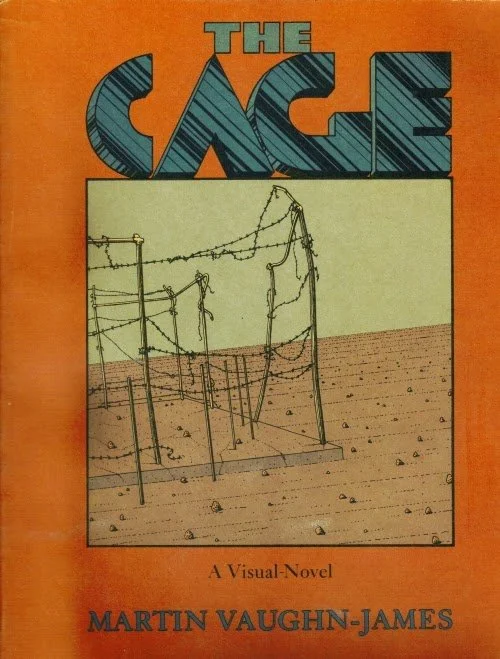Off the Grid: Comic artists who broke the rules and redrew the page
Comic art is often defined by repetition—consistent panelling, anatomy that "makes sense," and a visual language that guides the reader from page to page. But every now and then, an artist steps away from all that. They cut the rope.
This is a celebration of the creators who saw the comic page not as a grid but as a canvas—the ones who bent the frame, broke the panel, and said, "What if it didn't look like a comic at all?"
These aren't the big franchise names. These are the outliers. The inventors. The experimenters. The beautiful chaos-makers.
🌀 Gary Panter and the punk energy of Jimbo
Gary Panter is often called the godfather of punk comics. His art exploded out of the L.A. underground and became a signature look of the post-Raw era.
Panter's art looks like it was intentionally scratched into the page with a dull blade. It is scribbly, anti-linear, full of overlapping thoughts, and shouty block lettering. Jimbo is messy, loud, raw, and confident in his refusal to behave. Panter pushed against polish. He gave comics a punk attitude they'd never quite had before. And even though few followed his exact style, everyone felt the aftershock.
Jimbo: Adventures in Paradise (Pantheon, 1988)
This collected volume is the definitive showcase of Panter's punk-infused, chaotic artistry. Through Jimbo's surreal escapades in a dystopian landscape, Panter deconstructs traditional comic narratives, blending raw visuals with satirical commentary on consumer culture and existential themes.
🧠 Dave McKean's mixed-media meltdown in Arkham Asylum
British visual polymath Dave McKean is best known for his experimental covers for The Sandman and his genre-defying graphic novels.
In this landmark Batman tale, McKean's art is the madness. He used collage, paint, sculpture, and digital layering long before it was cool. The Joker's smile is literally smeared across mixed-media textures, and Batman looks like a ghost clawing through a nightmare. McKean shattered the idea that comics needed clean lines and flat colour. He introduced horror and psychological depth through texture—a medium within the medium.
Arkham Asylum: A Serious House on Serious Earth (DC Comics, 1989)
This standalone graphic novel is a landmark in psychological storytelling within the Batman canon. McKean's haunting mixed-media artwork complements Grant Morrison's introspective narrative. Batman confronts the asylum's inmates and his inner demons, blurring the lines between sanity and madness.
🎨 Zalathiel Vargas and the psychedelic fotonovela
Mexican artist Zalathiel Vargas is a surrealist illustrator whose 1970s work redefined Latin American visual storytelling.
Vargas took the humble fotonovela — basically photo-based comic books — and exploded them with colour, collage, and non-linear layouts. Eyes float where faces should be. Dialogue spirals. The story often disappears entirely. In a medium usually obsessed with clarity, Vargas celebrated confusion. His work was an acid trip disguised as pulp and remains one of the boldest visual experiments in Latin American comics.
Sensacional de Traileros #203 (Editorial EJEA, 1991)
In this issue, Vargas transforms the traditional fotonovela format into a psychedelic experience. His vivid, surreal illustrations and non-linear storytelling challenge conventional narratives, offering a unique blend of social commentary and avant-garde art that stands out in Mexican pulp comics.
🔄 Oubapo's comics of constraint
Formed in 1992, Oubapo (Ouvroir de Bande Dessinée Potentielle) is a collective of cartoonists who apply Oulipo-like constraints to comics storytelling under formal rules.
Think of a story that reads the same forward and backward. Or a panel that repeats twenty times, with the text evolving like a poem. The artists — including Lewis Trondheim and Matt Madden — treat comics like a lab for structural innovation. Oubapo didn't invent experimental comics, but they formalised the idea that constraint breeds creativity.
OuPus #3 (L'Association, 2000)
This compilation exemplifies Oubapo's commitment to constraint-based creativity. It showcases how formal limitations can lead to innovative and thought-provoking comic art by featuring works that play with palindromes, mirrored structures, and recursive narratives.
🪞Martin Vaughn-James – The Cage: A comic without characters
Martin Vaughn-James was a Canadian-British cartoonist and visual theorist who explored the philosophical limits of visual narrative.
This haunting, near-wordless graphic novel contains no people, characters, or dialogue — just a meticulously illustrated environment: a decaying cityscape filled with doors, walls, wires, shadows, and suggestion.
The Cage is a landmark of experimental comics — a meditation on time, architecture, and perception. Vaughn-James stripped the comic of its usual storytelling tools to explore what remains: mood, rhythm, isolation. It's one of the boldest artistic statements in the medium's history — almost no one talks about it.
The Cage (Coach House Press, 1975)
A slow, meditative descent into a world without people, The Cage uses architecture, repetition, and silence to evoke a story told entirely through space and absence.
Final thought
These artists didn't just push boundaries—they didn't see them. Their work may not have become mainstream, but it was never trying to. In doing so, they expanded what the medium could be. If comics are the intersection of words and pictures, these artists ran diagonally across that intersection, screaming something beautiful. For those of us watching, they reminded us that the panel is not a box—it's a door.
Still curious?
Subscribe to The Collector Hub newsletter below, where the weird, the rare, and the wonderfully questionable get the spotlight they deserve.




































